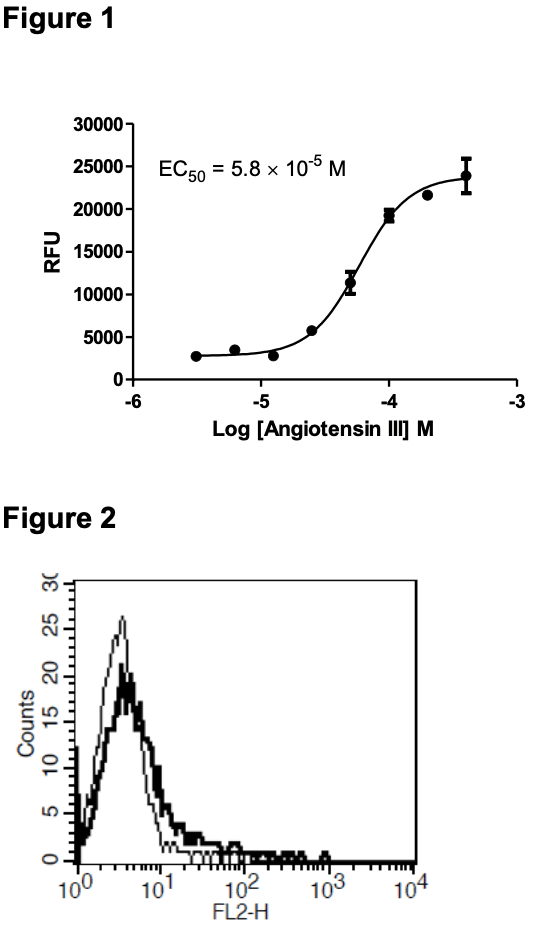Product Information
Catalog Number:
C1225
Lot Number:
C1225-070918
Quantity:
1 vial (2 x 106) frozen cells
Freeze Medium:
Cell Banker 2 (Amsbio 11891)
Host cell:
HEK293T
Transfection:
Full-length Human MAS1 cDNA (GenBank Accession Number NM_002377) with FLAG-tag sequence at the N-terminus
Recommended Storage:
Liquid nitrogen upon receiving
Propagation Medium: DMEM, 10% FBS, 1 μg/mL puromycin
Stability:
In progress
Data Sheet
Background: MAS1 belongs to the family of MAS-related orphan G protein coupled receptors, which are primarily expressed in primary sensory neurons and mast cells. The MAS-related GPCRs may be implicated in nociception, pruritus, sleep, cell proliferation, circulation, and mast cell degranulation. The MAS1 receptor when activated by binding angiotensin-(1-7) opposes many of the effects of angiotensin-II activated angiotensin receptor. Receptor agonists have similar therapeutic effects as angiotensin-II receptor antagonists including lowering blood pressure. Angiotensin peptide metabolites including angiotensin-III have also been reported to activate MAS1.
Application: Functional assays

Figure 1. Dose-dependent stimulation of calcium flux upon treatment with ligand, measured with MultiscreenTM Calcium 1.0 No Wash Assay Kit (Multispan MSCA01). Figure 2. Receptor expression on cell surface measured by flow cytometry (FACS) using an anti-FLAG antibody. Thin line: parental cells; thick line: receptor-expressing cells.
References:
Kalyan C. Tirupula1, Russell Desnoyer1, Robert C. Speth2, Sadashiva S. Karnik (2014). Atypical Signaling and Functional Desensitization Response of MAS Receptor to Peptide Ligands. PLOS ONE. V9 (7) e103520.
Solinski HJ, Gudermann T, Breit A (2014) Pharmacology and signaling of MAS- related G protein-coupled receptors. Pharmacol. Rev. Jul;66(3):570-97.
Young D, Waitches G, Birchmeier C, Fasano O, Wigler M (1986). “Isolation and characterization of a new cellular oncogene encoding a protein with multiple potential transmembrane domains”. Cell. 45 (5): 711–9.
